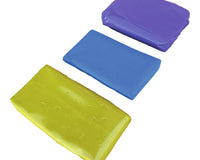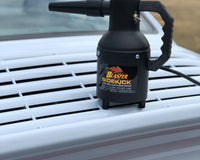Vintage cars are not just modes of transport; they are cherished artefacts of automotive history. Every curve, panel, and fitting on a classic vehicle tells a story that deserves to be preserved with respect and care. Detailing vintage cars differs vastly from cleaning modern vehicles. The goal is not just cleanliness but conservation. Many of the original components in vintage cars—be it lacquered wood dashboards, real chrome bumpers, or delicate paintwork—require a tailored approach to avoid irreversible damage. Enthusiasts and collectors often place immense value on originality, and careless detailing can ruin not just the aesthetics but also the car’s worth.
Modern detailing products, while effective on contemporary materials, may not always be compatible with the older finishes used decades ago. For example, nitrocellulose paint—common in vintage cars—can react poorly with strong solvents. Similarly, rubber seals, leather, and vinyls used back then can dry, crack, or become discoloured if exposed to inappropriate cleaners. Understanding this delicate balance is essential to achieve a show-stopping finish without compromising the integrity of the vehicle. It's also worth noting that many vintage cars were hand-built or customised, so detailing techniques may need to vary from model to model. That’s why studying the car's history, finishes, and materials is the first step before touching a cloth to its surface.
Professionals often approach vintage detailing with a conservator’s mindset—less about transformation and more about preservation. Whether preparing the car for a concours event or a photoshoot, the focus remains on accentuating the car's originality. This includes choosing gentle, pH-neutral products, avoiding machine polishing unless absolutely necessary, and hand-cleaning every inch of the car with patience and precision. These extra steps might seem labour-intensive, but they’re crucial in preserving the heritage and value of your vintage treasure.
Gentle Exterior Cleaning: Avoiding Damage to Ageing Paint and Chrome
The paint on vintage vehicles, particularly those with original finishes, is highly sensitive. Unlike today’s multi-stage base and clear coat systems, older paint jobs tend to be single-stage and far more prone to fading, chalking, or becoming brittle. This makes the use of pressure washers or aggressive cleaners a serious risk. A gentle hand wash using lukewarm water and a soft microfibre mitt is usually the safest method. Add a pH-neutral shampoo that doesn't strip oils or waxes and ensure frequent rinsing to avoid any abrasives being dragged across the surface.
When drying, avoid synthetic chamois or squeegees. These can cause micro-scratches, especially on softer single-stage paint. Instead, opt for soft, high-GSM microfibre towels, gently patting the car dry instead of wiping. Always ensure the towels are clean and free from debris, as even tiny particles can inflict damage. Drying is especially important around seams, badges, and trim where moisture can lead to rust formation in older vehicles. Inspect these areas with a detailing brush or blower to expel trapped water and maintain long-term surface integrity.
Chrome detailing is another area requiring special attention. Vintage chrome is often real metal, unlike many modern plastic-coated trims. It can tarnish easily but also gets scratched quickly if rubbed with the wrong materials. Always use non-abrasive polishes and a soft polishing cloth, and never apply heavy pressure. Chrome requires a layer of protection after cleaning—traditional waxes or specialised chrome sealants work well to prevent oxidation and maintain a mirror-like shine. Periodically check for pitting or corrosion, particularly in humid environments, and treat any signs of deterioration before they worsen.
Preserving the Interior: From Wooden Dashboards to Original Upholstery
The interior of a vintage car is often where its charm truly lies. Leather seats, lacquered wooden dashboards, Bakelite knobs, and metal accents all require specialised handling to retain their authenticity. Begin by vacuuming the interior using a soft brush attachment, ensuring no crumbs or dirt are trapped in seams, pleats, or vents. Be cautious around delicate materials—don't press too hard or use stiff brushes. A gentle hand and a well-lit space are invaluable in spotting hidden grime without causing harm.
Leather used in classic vehicles is typically non-coated and requires conditioning rather than cleaning with modern leather cleaners. Use a leather balm that rehydrates rather than strips oils. Test on a hidden area first to ensure compatibility. Avoid alcohol-based or overly fragranced products that may dry or discolour the hide. Similarly, wooden dashboards or trim pieces should be cleaned with a lightly dampened microfibre cloth and then treated with a high-quality wood polish. Never saturate wooden areas with water, as this can lead to warping or peeling of the finish.

One of the most neglected but essential elements of vintage interior detailing is the headliner. Often made from cloth, suede, or cardboard-backed vinyl, these headliners can be fragile. Cleaning should be done without soaking. Light vacuuming followed by spot cleaning with fabric-safe products is usually the safest approach. Also, be mindful of any old-school electronics or wiring under the dashboard; avoid introducing moisture or cleaning agents near fuse boxes, knobs, or vintage radios. Refrain from the temptation to modernise these areas, as originality is where the true value lies.
Engine Bay Detailing: Clean Without Compromising Classic Components
Opening the bonnet of a vintage vehicle can feel like looking into the past. But cleaning the engine bay must be approached with utmost caution. These engine bays often feature exposed carburettors, cloth-covered wiring, and non-sealed connectors, making them extremely vulnerable to water ingress. Avoid power washers altogether. Instead, rely on dry cleaning techniques, brushes, and steam or damp cloths where absolutely necessary. Compressed air can also help in lifting dust and debris from tight corners without displacing delicate fittings.
Begin by disconnecting the battery—many vintage vehicles don't have modern electrical shielding, so a stray drop of water can wreak havoc. Use soft brushes to gently dislodge dust, particularly around the distributor cap, ignition coils, and wiring looms. For light oil and grime, apply a waterless degreaser sparingly on a cloth and wipe rather than spray. Clean metal parts with appropriate polish, but always check compatibility with aluminium or magnesium components found in older engines.
Rubber hoses, fan belts, and seals should be inspected for signs of cracking or ageing. Apply a rubber conditioner designed for automotive use to restore flexibility and sheen. Avoid petroleum-based products, which can degrade rubber over time. Once everything is clean and dry, reconnect the battery and start the engine to ensure everything is running smoothly. Regular engine bay maintenance not only enhances the aesthetic but can also help you spot small leaks or component failures before they turn into major issues.
Protecting and Storing: The Final Touches for Long-Term Preservation
Once your vintage car is spotless inside and out, it's essential to protect that hard work. Unlike daily drivers, classic cars often spend long periods in storage, making them vulnerable to dust, temperature fluctuations, and humidity. Applying a carnauba wax or natural wax product can help seal and protect older paintwork. Avoid synthetic sealants that may not bond well with aged finishes. Waxing should be done by hand with soft applicators and buffed gently to prevent swirl marks.
For interior storage, use breathable car covers made specifically for vintage vehicles. These covers allow trapped moisture to escape while protecting from UV, dust, and minor abrasions. Avoid plastic or waterproof tarps, which can trap moisture and accelerate rust or mildew formation. If storing in a garage, consider using a battery tender and maintaining stable humidity to prevent metal parts and chrome from oxidising.
Regular check-ups are part of detailing too. Even if the car isn’t driven often, a monthly inspection and light dusting can prevent the buildup of contaminants and identify potential problems early. Rotate the tyres occasionally, check for condensation, and ensure that the vehicle remains in a dry and stable environment. Detailing is not a one-off job but an ongoing commitment to preserving the legacy of the car.
Conclusion: Detailing Vintage Cars the Right Way
Detailing a vintage car isn’t about creating artificial perfection—it’s about enhancing what’s already there while preserving the authenticity that makes the vehicle unique. Every choice, from the cleaning product to the cloth, plays a role in maintaining its value, aesthetic, and mechanical condition. Unlike modern cars, vintage vehicles come with irreplaceable parts and materials that demand care, time, and respect. Whether you're preparing your classic for a show, sale, or simply preserving a piece of history, adopting a cautious and informed detailing routine ensures you do justice to the vehicle’s heritage. With the right techniques and patience, you can keep your vintage pride and joy looking its best for decades to come.




